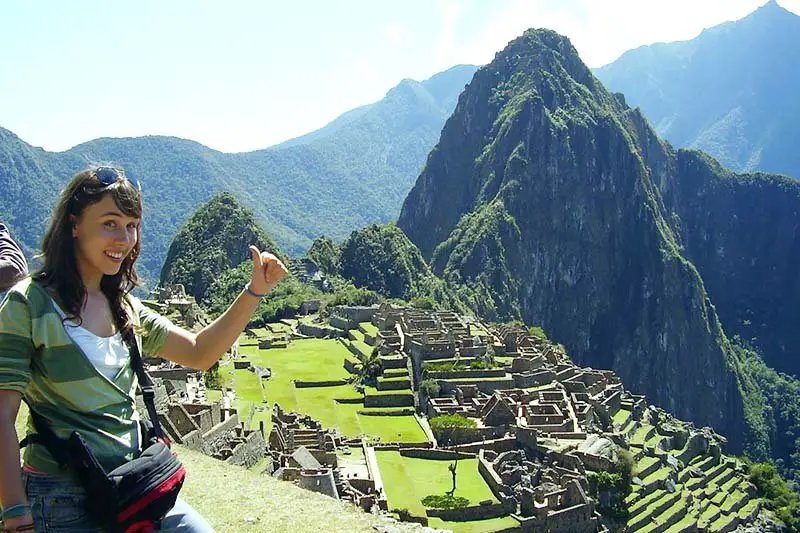So, the travel bug has bitten you. You’re dreaming of far-off lands, exotic cultures, and experiences that will change your perspective. But then reality hits. You sit down to plan, and… blank. Where do you even begin? It’s a common feeling! “I want to travel but don’t know where to start” is a sentiment shared by many aspiring adventurers. Don’t worry, you’re not alone. This comprehensive guide will break down the process, inspire you with incredible destinations, and provide you with the tools and knowledge to turn your travel dreams into a reality.
We’ll navigate the complexities of modern travel, including current trends, potential travel restrictions (as of 2025), and provide practical tips for budgeting, packing, and staying safe.
The Overwhelm is Real: Why You Don’t Know Where to Start
Before we dive into the exciting part of choosing destinations, let’s address the root of the problem. Why are you feeling so overwhelmed?
Too Many Choices
The world is a vast and beautiful place. The sheer number of potential destinations can be paralyzing. From the beaches of Bali to the mountains of Patagonia, the options seem endless.
Fear of the Unknown
Traveling to a new place can be intimidating. Concerns about language barriers, unfamiliar customs, safety, and logistics can create anxiety and hinder the planning process.
Budget Constraints
Let’s face it, travel costs money. The perceived expense of international travel can be a significant deterrent. Many people assume they can’t afford to travel, which stops them from even exploring the possibilities.

travel planning tips
Lack of Time
Modern life is busy. Finding the time to plan and execute a trip can be a challenge. Work commitments, family responsibilities, and other obligations can make travel feel impossible.
Information Overload
The internet is a double-edged sword. While it provides access to a wealth of travel information, it can also be overwhelming. Sifting through countless websites, blogs, and reviews can be time-consuming and confusing.
Phase 1: Self-Discovery – Finding Your Travel Style
The first step to planning any trip is understanding your own preferences and priorities. What kind of traveler are you? What are you looking to gain from your travel experiences? Answer these questions honestly; this is the foundation for your entire journey.
What Are Your Interests?
Think about the things you enjoy doing in your everyday life. Are you a foodie? A history buff? An outdoor enthusiast? A culture seeker? Identifying your interests will help you narrow down potential destinations and activities.
Example: If you love hiking and being outdoors, consider destinations like Patagonia, the Swiss Alps, or the national parks of the United States. If you’re a foodie, look into culinary hotspots like Italy, Thailand, or Mexico.
What’s Your Travel Style?
Do you prefer luxury accommodations or budget-friendly hostels? Do you like structured itineraries or spontaneous adventures? Consider your preferred level of comfort, independence, and flexibility.
Here’s a breakdown of common travel styles:
- Luxury Travel: High-end accommodations, fine dining, private tours, and personalized service.
- Budget Travel: Hostels, budget hotels, street food, public transportation, and DIY activities.
- Backpacking: Independent travel with minimal luggage, focusing on adventure and cultural immersion.
- Adventure Travel: Activities like hiking, climbing, diving, and wildlife viewing.
- Cultural Travel: Exploring historical sites, museums, art galleries, and local traditions.
- Solo Travel: Traveling alone, offering independence and self-discovery.
- Group Travel: Organized tours with a group of like-minded travelers.
- Family Travel: Traveling with children, requiring careful planning and kid-friendly activities.
- Sustainable Travel: Eco-friendly travel practices that minimize environmental impact and support local communities.
What’s Your Budget?
Be realistic about how much you can afford to spend on your trip. This will significantly impact your choice of destinations and activities. Consider all the potential costs, including transportation, accommodation, food, activities, visas, and travel insurance.
Pro Tip: Create a detailed budget spreadsheet to track your expenses and ensure you stay within your financial limits. There are plenty of free templates online.
How Much Time Do You Have?
The amount of time you have available will also influence your destination choices. A weekend getaway requires a different approach than a month-long backpacking trip. Be realistic about how much you can see and do in the time you have available.
What’s Your Comfort Zone?
Are you willing to step outside your comfort zone and try new things? Or do you prefer to stick to familiar experiences? Some people thrive on adventure and cultural immersion, while others prefer the comfort and familiarity of tourist-friendly destinations.
Phase 2: Destination Inspiration – Where to Go?
Now for the fun part! Let’s explore some incredible destinations to spark your wanderlust. We’ll categorize them based on different interests and travel styles.
For the Adventure Seeker:
- Patagonia (Argentina & Chile): Dramatic landscapes, glaciers, mountains, and hiking trails. Popular for trekking, kayaking, and wildlife viewing. Current trends include sustainable trekking tours and eco-lodges. Regulations in some national parks require permits booked well in advance.
- New Zealand: Adventure capital of the world, offering bungee jumping, white-water rafting, skydiving, and hiking. Known for its stunning scenery and diverse landscapes. Increased focus on Maori cultural tourism and eco-tourism.
- Nepal (Everest Base Camp Trek): A challenging but rewarding trek to the base of the world’s highest mountain. Experience breathtaking views and Sherpa culture. Permits are required and trekking season is typically March-May and September-November. Increasing regulations to limit the number of permits and promote responsible trekking.
- Costa Rica: Rainforests, volcanoes, beaches, and abundant wildlife. Offers zip-lining, surfing, white-water rafting, and wildlife viewing. Leading the way in sustainable tourism and eco-lodges.
- Iceland: Volcanoes, glaciers, hot springs, and the Northern Lights. Offers hiking, glacier hiking, ice climbing, and whale watching. Over-tourism is a concern, so consider visiting during the shoulder seasons (spring/fall).
For the Culture Enthusiast:
- Kyoto, Japan: Ancient temples, traditional gardens, geishas, and exquisite cuisine. Experience Japanese culture and history. Consider attending a tea ceremony or visiting a traditional ryokan. Increased tourism is driving efforts to preserve traditional neighborhoods and promote respectful tourism.
- Marrakech, Morocco: Vibrant souks, bustling squares, stunning architecture, and delicious food. Experience Moroccan culture and hospitality. Learn some basic Arabic phrases to enhance your experience. Be aware of local customs regarding dress and photography.
- Rome, Italy: Ancient ruins, iconic landmarks, world-class museums, and delicious food. Explore Roman history and art. Book tickets to popular attractions in advance to avoid long lines.
- Hanoi, Vietnam: A bustling city with ancient temples, street food stalls, and a rich history. Experience Vietnamese culture and cuisine. Consider taking a cooking class to learn how to make traditional dishes. Increased international tourism is bringing modern influences to Hanoi while preserving its traditional charm.
- Mexico City, Mexico: A vibrant metropolis with ancient ruins, colonial architecture, world-class museums, and delicious food. Explore Mexican history and culture. Be mindful of safety precautions and stay in well-populated areas.
For the Foodie Traveler:
- Italy (Tuscany, Bologna): Pasta, pizza, wine, and regional specialties. Experience Italian cuisine and culinary traditions. Take a cooking class or visit a local winery. Increasing focus on agritourism, allowing visitors to experience farm-to-table dining.
- Thailand (Bangkok, Chiang Mai): Street food, curries, noodles, and exotic fruits. Experience Thai cuisine and vibrant markets. Take a Thai cooking class or explore the night markets. Sustainable food practices are gaining traction, promoting local and organic ingredients.
- Mexico (Oaxaca, Mexico City): Tacos, mole, enchiladas, and regional specialties. Experience Mexican cuisine and street food culture. Visit a local market or take a cooking class. Growing awareness of food tourism’s impact, with efforts to support local farmers and producers.
- Spain (San Sebastian, Barcelona): Tapas, paella, seafood, and wine. Experience Spanish cuisine and culinary traditions. Visit a tapas bar or take a wine tour. Emphasis on regional specialties and locally sourced ingredients.
- Japan (Tokyo, Osaka): Sushi, ramen, tempura, and regional specialties. Experience Japanese cuisine and culinary arts. Visit a sushi restaurant or take a ramen-making class. Increased interest in Kaiseki (traditional multi-course Japanese dinner) and other high-end culinary experiences.
For the Beach Lover:
- Maldives: Luxury resorts, pristine beaches, crystal-clear waters, and vibrant coral reefs. Perfect for snorkeling, diving, and relaxation. Increasing focus on sustainable tourism and protecting the fragile marine environment.
- Bali, Indonesia: Beautiful beaches, lush rice paddies, ancient temples, and vibrant culture. Offers surfing, yoga, and cultural experiences. Growing concerns about over-tourism, leading to initiatives to promote responsible travel.
- Bora Bora, French Polynesia: Luxury resorts, overwater bungalows, turquoise lagoons, and volcanic peaks. Perfect for relaxation, snorkeling, and diving. Requires a higher budget than some other island destinations.
- Seychelles: Granite boulders, pristine beaches, lush vegetation, and diverse wildlife. Offers snorkeling, diving, and nature walks. Committed to preserving its natural beauty and promoting sustainable tourism.
- Santorini, Greece: Whitewashed villages, stunning sunsets, volcanic landscapes, and beautiful beaches. Offers swimming, sunbathing, and exploring the island’s history. Over-tourism is a concern, particularly during peak season.
For the Budget Traveler:
- Southeast Asia (Thailand, Vietnam, Cambodia): Affordable accommodation, delicious street food, and rich cultural experiences. Perfect for backpacking and budget travel. Growing tourism infrastructure makes it easier than ever to travel independently.
- Eastern Europe (Czech Republic, Hungary, Poland): Historic cities, affordable prices, and delicious food. Offers cultural experiences and historical sites. Increasingly popular destination, offering great value for money.
- Portugal: Beautiful beaches, historic cities, delicious food, and affordable prices. Offers a relaxed atmosphere and stunning scenery. Gaining popularity as a budget-friendly alternative to other Western European destinations.
- Mexico: Affordable accommodation, delicious food, and rich cultural experiences. Offers beaches, historical sites, and vibrant cities. Be aware of safety precautions and stay in well-populated areas.
- Colombia: Beautiful scenery, vibrant cities, friendly people, and affordable prices. Offers a mix of culture, adventure, and relaxation. Becoming increasingly popular as a tourist destination, offering a unique travel experience.
Table: Destination Ideas Based on Travel Style
| Travel Style | Destination Ideas |
|---|---|
| Adventure Seeker | Patagonia, New Zealand, Nepal, Costa Rica, Iceland |
| Culture Enthusiast | Kyoto, Marrakech, Rome, Hanoi, Mexico City |
| Foodie Traveler | Italy, Thailand, Mexico, Spain, Japan |
| Beach Lover | Maldives, Bali, Bora Bora, Seychelles, Santorini |
| Budget Traveler | Southeast Asia, Eastern Europe, Portugal, Mexico, Colombia |
Phase 3: Planning Your Trip – The Nitty Gritty
Once you’ve chosen a destination (or a few!), it’s time to start planning the details. This can seem daunting, but breaking it down into manageable steps makes it much easier.
Setting a Realistic Budget
We touched on this earlier, but it’s crucial to create a detailed budget. Research the average costs of accommodation, transportation, food, and activities in your chosen destination. Don’t forget to factor in visa fees, travel insurance, and potential unexpected expenses.
Example: Let’s say you’re planning a 10-day trip to Thailand. Here’s a sample budget breakdown:
- Flights: $800 – $1200
- Accommodation: $20 – $50 per night (hostels/budget hotels) = $200 – $500
- Food: $15 – $30 per day = $150 – $300
- Activities: $20 – $50 per day = $200 – $500
- Transportation (local): $10 – $20 per day = $100 – $200
- Visa (if required): $0 – $50
- Travel Insurance: $50 – $100
- Total Estimated Cost: $1500 – $2850
Remember, this is just an example. Adjust the amounts based on your travel style and preferences.
Booking Flights and Accommodation
Book your flights and accommodation in advance, especially if you’re traveling during peak season. Use online travel agencies like Skyscanner, Kayak, Expedia, and Booking.com to compare prices and find the best deals. Consider alternative accommodation options like Airbnb and guesthouses for a more local experience. 2025 Trends show a shift towards booking directly with hotels to avoid OTA fees and potential communication issues.
Pro Tip: Be flexible with your travel dates. Flying on weekdays or during the off-season can often save you money.
Visa Requirements and Vaccinations
Research the visa requirements for your chosen destination well in advance. Some countries require visas for citizens of certain nationalities. Apply for your visa as soon as possible to avoid any last-minute delays. Consult your doctor about necessary vaccinations and health precautions. Ensure your routine vaccinations are up to date and inquire about any recommended vaccinations for your destination. Plan this at least 2 months ahead.
Tip: Websites like the embassy or consulate website of the country you plan to visit will provide the most accurate visa information. The CDC website will have the most recent recommendations on vaccinations and travel notices.
Travel Insurance
Travel insurance is essential. It can protect you against unexpected medical expenses, trip cancellations, lost luggage, and other unforeseen events. Compare different insurance providers and choose a policy that suits your needs and budget. Pay close attention to what is covered and what isn’t, including pandemic related coverage.
Tip: Read the fine print of your travel insurance policy carefully. Understand the terms and conditions before you purchase it.
Creating an Itinerary
Develop a rough itinerary to help you plan your time and ensure you don’t miss any must-see attractions. Be flexible and allow for spontaneous adventures, but having a general plan will help you stay organized and make the most of your trip. Don’t overpack your itinerary; allow for flexibility and relaxation. Consider using apps like Google Trips or Wanderlog to create and manage your itinerary.
Example: Here’s a sample itinerary for a 5-day trip to Rome:
- Day 1: Arrive in Rome, check into your hotel, explore the Colosseum and Roman Forum.
- Day 2: Visit the Vatican City (St. Peter’s Basilica, Vatican Museums, Sistine Chapel).
- Day 3: Explore the Pantheon, Trevi Fountain, and Spanish Steps.
- Day 4: Visit the Borghese Gallery and Gardens, stroll through Trastevere.
- Day 5: Depart from Rome.
Packing Smart
Pack light and pack smart. Create a packing list and only bring essential items. Consider the climate and activities you’ll be doing in your chosen destination. Roll your clothes to save space and use packing cubes to organize your luggage. Don’t forget essential medications, toiletries, and a first-aid kit. Consider using a digital luggage scale to avoid overweight baggage fees.
Example Packing List:
- Clothing: T-shirts, shorts, pants, socks, underwear, a light jacket, swimwear.
- Footwear: Comfortable walking shoes, sandals.
- Toiletries: Toothbrush, toothpaste, shampoo, conditioner, sunscreen, insect repellent.
- Medications: Prescription medications, pain relievers, allergy medication.
- Electronics: Phone, charger, adapter, camera.
- Documents: Passport, visa, travel insurance information, flight tickets, hotel reservations.
Learn Basic Phrases
Learning a few basic phrases in the local language can go a long way in enhancing your travel experience. It shows respect for the local culture and makes it easier to communicate with locals. Download a language learning app like Duolingo or Memrise to learn basic greetings, phrases, and vocabulary. Prepare a phrasebook or translation app on your phone for easy access.
Example Phrases:
- Hello: Hola (Spanish), Bonjour (French), Konnichiwa (Japanese)
- Thank you: Gracias (Spanish), Merci (French), Arigato (Japanese)
- Please: Por favor (Spanish), S’il vous plaît (French), Onegaishimasu (Japanese)
- Excuse me: Con permiso (Spanish), Excusez-moi (French), Sumimasen (Japanese)
- Do you speak English?: ¿Habla inglés? (Spanish), Parlez-vous anglais? (French), Eigo o hanasemasu ka? (Japanese)
Staying Safe
Prioritize your safety while traveling. Be aware of your surroundings, avoid walking alone at night, and keep your valuables secure. Research common scams and tourist traps in your chosen destination. Register with your embassy or consulate so they can contact you in case of an emergency. Share your itinerary with a trusted friend or family member. Stay updated on local news and advisories.
Phase 4: Embracing the Journey – Making the Most of Your Trip
Congratulations! You’ve planned your trip and are ready to embark on your adventure. Here’s how to make the most of it:
Be Open to New Experiences
Step outside your comfort zone and try new things. Embrace the unexpected and be open to new experiences. Talk to locals, try new foods, and explore off-the-beaten-path destinations. Be willing to change your plans if something unexpected comes up. Embrace spontaneity and allow for serendipitous discoveries.
Connect with Locals
Interact with the locals and learn about their culture and traditions. Ask for recommendations, share stories, and show respect for their way of life. Participate in local festivals and events. Use online platforms like Couchsurfing or Meetup to connect with locals. Be respectful of local customs and traditions.
Document Your Journey
Capture your memories by taking photos, writing in a journal, or creating videos. Document your experiences and share them with friends and family. Create a travel blog or social media account to share your adventures with the world. Consider creating a photo album or scrapbook to preserve your memories.
Disconnect to Reconnect
Take a break from technology and immerse yourself in your surroundings. Disconnect from social media and emails and focus on the present moment. Enjoy the beauty of your surroundings and appreciate the unique experiences you’re having. Designate specific times to disconnect from technology and be fully present in your surroundings.
Practice Responsible Travel
Be mindful of your impact on the environment and local communities. Choose eco-friendly accommodation and activities. Support local businesses and artisans. Respect local customs and traditions. Reduce your carbon footprint by using public transportation, walking, or cycling. Avoid single-use plastics and dispose of waste responsibly. Be aware of your impact on local communities and support sustainable tourism practices.
Current Travel Trends in 2025
Understanding current trends in the travel industry can help you plan a more relevant and enjoyable trip. As of 2025, here are some key trends:
- Sustainable Travel: Growing demand for eco-friendly and responsible travel options. Travelers are increasingly concerned about the environmental and social impact of their trips.
- Experiential Travel: Focus on immersive and authentic experiences rather than just sightseeing. Travelers are seeking opportunities to connect with local culture and participate in unique activities.
- Wellness Travel: Travel focused on health and well-being, including yoga retreats, spa vacations, and nature-based activities. Growing interest in mental and physical well-being while traveling.
- Bleisure Travel: Combining business travel with leisure activities. Extending business trips to explore the destination.
- Solo Travel: Increasing popularity of traveling alone, particularly among women. Offers independence, self-discovery, and the opportunity to meet new people.
- Remote Work & Travel: With remote work becoming more prevalent, the lines between work and travel are blurring. Digital nomads are combining work with travel, staying in destinations for longer periods.
- AI in Travel: Artificial intelligence is becoming more integrated into the travel industry, with AI-powered chatbots, personalized recommendations, and automated travel planning tools.
- Increased Use of Travel Apps: Travelers are increasingly relying on mobile apps for navigation, translation, booking, and itinerary planning.
- Demand for Authentic and Local Experiences: Travelers are looking for experiences that offer a deeper understanding of the local culture and way of life.
Phase 5: Post-Trip Reflections
The journey doesn’t end when you return home. Reflecting on your experiences can help you grow and learn from your travels.
Journaling and Scrapbooking
Take the time to reflect on your trip. What were your favorite moments? What did you learn? How did the trip change you? Capture these reflections in a journal or scrapbook. Documenting your experiences can help you process your emotions and solidify your memories. Share your reflections with friends and family.
Sharing Your Experiences
Share your travel stories with others. Inspire others to travel and explore the world. Write a blog post, create a video, or give a presentation about your trip. Sharing your experiences can help you connect with others and relive your memories. Offer advice and tips to aspiring travelers.
Planning Your Next Adventure
Start planning your next trip! Use your past experiences to inform your future travels. Explore new destinations, try new activities, and challenge yourself to grow. The world is full of possibilities. Embrace the spirit of adventure and continue exploring!
Real-World Examples
Let’s illustrate these principles with a few real-world examples:
- Example 1: Sarah, the Hesitant Solo Traveler: Sarah always dreamed of traveling to Europe but felt intimidated by the prospect of traveling alone. She started small, taking a weekend trip to a nearby city. This gave her the confidence to plan a solo trip to Italy. She booked a small-group tour to Rome and Florence, allowing her to explore the cities with a guide while still enjoying the independence of solo travel. She met other travelers on the tour and made lasting friendships.
- Example 2: David, the Budget-Conscious Backpacker: David wanted to explore Southeast Asia but was on a tight budget. He opted for hostels and budget-friendly guesthouses. He ate street food, used public transportation, and took advantage of free activities like visiting temples and parks. He saved money by traveling during the shoulder season and booking flights in advance. He was able to travel for several months on a relatively small budget.
- Example 3: Emily, the Sustainable Traveler: Emily was passionate about environmental conservation and wanted to travel responsibly. She chose eco-lodges and supported local businesses. She used public transportation and avoided single-use plastics. She volunteered with a local conservation organization. She made a positive impact on the environment and local communities through her travels.
Overcoming Common Travel Fears
Let’s tackle some common travel fears head-on:
- Fear of Flying: Consider taking a fear of flying course or talking to a therapist. Use relaxation techniques during the flight.
- Fear of Getting Sick: Research necessary vaccinations and health precautions. Pack a first-aid kit and travel insurance.
- Fear of Crime: Be aware of your surroundings, avoid walking alone at night, and keep your valuables secure. Research common scams and tourist traps.
- Fear of Getting Lost: Download offline maps and learn basic phrases in the local language. Ask for directions if you’re unsure.
- Fear of Loneliness: Stay in hostels or guesthouses to meet other travelers. Join group tours or activities. Connect with locals through online platforms.
Resources to Help You Plan
Here are some valuable resources to help you plan your trip:
- Travel Blogs: The Blonde Abroad, Nomadic Matt, Adventurous Kate
- Travel Forums: TripAdvisor, Lonely Planet
- Travel Booking Sites: Skyscanner, Kayak, Expedia, Booking.com
- Visa Information: Travel.State.Gov, VisaHQ
- Travel Insurance: World Nomads, Allianz, Travel Guard
- Language Learning Apps: Duolingo, Memrise
Staying Updated on Travel Regulations in 2025
Keeping up-to-date with travel regulations in 2025 is more important than ever. Here’s what you need to know:
- Passport and Visa Requirements: Ensure your passport is valid for at least six months beyond your intended stay. Check the visa requirements for your destination country. Some countries may require visas in advance, while others offer visas on arrival.
- COVID-19 Related Restrictions: While many countries have lifted strict COVID-19 related restrictions, it’s essential to check the latest guidelines before traveling. Some destinations may still require proof of vaccination, negative tests, or health declarations. Stay informed through official government websites.
- Health and Safety Advisories: Monitor health and safety advisories issued by your government and international organizations like the World Health Organization (WHO). These advisories provide crucial information about potential health risks, disease outbreaks, and safety concerns in your destination.
- Travel Insurance Policies: Review your travel insurance policy to ensure it covers COVID-19 related issues, including medical expenses, trip cancellations, and quarantine costs. Understand the terms and conditions of your policy and any exclusions that may apply.
- Border Control and Customs Regulations: Familiarize yourself with the border control and customs regulations of your destination country. Be aware of any restrictions on prohibited items, such as certain foods, plants, or medications. Declare any items that may be subject to customs duties or taxes.
Essential Apps for the Modern Traveler
In today’s digital age, several apps can streamline your travel planning and enhance your experience on the road. Here are some must-have apps for the modern traveler:
- Navigation: Google Maps, Maps.me (for offline maps)
- Translation: Google Translate, iTranslate
- Accommodation: Booking.com, Airbnb
- Flights: Skyscanner, Kayak
- Budgeting: Mint, Trail Wallet
- Itinerary Planning: TripIt, Wanderlog
- Language Learning: Duolingo, Memrise
- Currency Conversion: XE Currency Converter
- Transportation: Uber, local public transit apps
- Reviews and Recommendations: TripAdvisor, Yelp
By leveraging these apps, you can navigate unfamiliar places, communicate with locals, manage your finances, and stay organized throughout your travels.
Sustainable and Responsible Travel Tips for 2025
Sustainable and responsible travel is becoming increasingly important as travelers seek to minimize their impact on the environment and local communities. Here are some tips for practicing sustainable and responsible travel in 2025:
- Eco-Friendly Accommodations: Choose accommodations that prioritize sustainability, such as eco-lodges, hotels with green certifications, or guesthouses that support local communities.
- Reduce Your Carbon Footprint: Opt for public transportation, walking, or cycling whenever possible. Consider flying direct routes to minimize emissions.
- Support Local Businesses: Shop at local markets, eat at family-owned restaurants, and purchase souvenirs from local artisans. This helps support the local economy and preserve cultural traditions.
- Respect Local Customs and Traditions: Learn about the local culture and customs of your destination. Dress modestly when visiting religious sites and be mindful of local etiquette.
- Conserve Resources: Conserve water and energy by turning off lights and air conditioning when you leave your accommodation. Use reusable water bottles and shopping bags to reduce waste.
- Avoid Single-Use Plastics: Say no to single-use plastics such as plastic straws, bottles, and bags. Carry your own reusable alternatives.
- Respect Wildlife: Observe wildlife from a safe distance and avoid activities that may harm animals or their habitats. Support responsible wildlife tourism operators.
- Leave No Trace: Pack out all trash and waste. Stay on marked trails and avoid disturbing natural environments.
- Offset Your Carbon Emissions: Consider purchasing carbon offsets to compensate for the emissions generated by your flights and other travel activities.
- Educate Yourself: Learn about the environmental and social issues facing your destination. Support organizations that are working to address these issues.
By following these tips, you can minimize your impact and contribute to the preservation of the planet and its diverse cultures.
Travel Safety Tips for Solo Travelers in 2025
Solo travel can be an incredibly rewarding experience, but it’s essential to prioritize your safety. Here are some safety tips specifically for solo travelers in 2025:
- Share Your Itinerary: Let friends and family know your travel plans, including your flight details, accommodation information, and daily itinerary.
- Stay Connected: Purchase a local SIM card or ensure your phone has international roaming capabilities. Keep your phone charged and have a backup power bank.
- Trust Your Instincts: If something feels off or makes you uncomfortable, trust your instincts and remove yourself from the situation.
- Avoid Walking Alone at Night: Stick to well-lit and populated areas, especially after dark. If you must walk alone, consider using a taxi or ride-sharing service.
- Keep Your Valuables Secure: Use a money belt or hidden pocket to store your passport, credit cards, and cash. Avoid displaying expensive jewelry or electronics.
- Be Aware of Your Surroundings: Pay attention to your surroundings and be mindful of potential scams or tourist traps. Avoid getting distracted by your phone or other devices.
- Learn Basic Self-Defense: Consider taking a self-defense class to learn basic techniques for protecting yourself in a dangerous situation.
- Limit Alcohol Consumption: Avoid drinking excessively, especially when you’re alone. Alcohol can impair your judgment and make you more vulnerable to crime.
- Make Copies of Important Documents: Make copies of your passport, visa, travel insurance information, and credit cards. Store these copies separately from the originals.
- Stay Informed: Stay updated on local news and advisories. Be aware of any potential safety concerns in your destination.
By following these safety tips, you can minimize your risk and enjoy a safe and fulfilling solo travel experience.
Navigating Travel in the Age of Social Media: Best Practices
Social media has revolutionized the way we travel, offering new ways to discover destinations, share experiences, and connect with other travelers. However, it’s important to use social media responsibly and safely while traveling. Here are some best practices:
- Be Mindful of Your Privacy: Avoid posting your exact location in real-time. This can make you a target for theft or other crimes. Consider delaying your posts until after you’ve left the location.
- Respect Local Cultures: Be respectful of local customs and traditions when taking photos or videos. Ask for permission before photographing people and avoid taking photos in sensitive locations.
- Avoid Oversharing: Be mindful of the information you share online. Avoid posting details about your accommodation, travel dates, or financial situation.
- Use Social Media for Research: Use social media platforms like Instagram and TikTok to discover new destinations and hidden gems. Follow travel influencers and bloggers for inspiration and tips.
- Connect with Other Travelers: Use social media groups and forums to connect with other travelers who are visiting the same destination. Share tips, ask questions, and meet up with fellow travelers.
- Be Authentic: Avoid portraying an unrealistic or overly curated version of your travels. Share both the highlights and the challenges of your experiences.
- Support Local Businesses: Use social media to promote
FAQ: Your Travel Planning Questions Answered
Q: I’m overwhelmed by all the options. How do I narrow down where to go?
A: Start by identifying your travel style and priorities (adventure, culture, relaxation, etc.). Use the destination categories in this guide as a starting point, then factor in budget, time, and comfort level. For example, if you have a week and love beaches, Bali or Portugal might be perfect. If you’re on a tight budget, Southeast Asia or Eastern Europe offer incredible value.
Q: How far in advance should I plan my trip?
A: For international travel, aim to book flights 3–6 months ahead for the best prices. Popular destinations (like Japan or Italy) may require even earlier planning for accommodations and activities. Last-minute trips can work, but you’ll have fewer options and may pay more.
Q: Is solo travel safe?
A: Yes, with precautions! Choose destinations known for being solo-traveler-friendly (e.g., Japan, Iceland, or Thailand), share your itinerary with someone, and stay in well-reviewed hostels or hotels. Trust your instincts and research local scams beforehand.
Q: How can I travel on a tight budget?
A: Prioritize budget-friendly regions (Southeast Asia, Central America), use public transport, eat local street food, and stay in hostels or guesthouses. Travel during shoulder seasons (spring/fall) for cheaper flights and fewer crowds.
Q: What’s the biggest mistake first-time travelers make?
A: Overpacking and overplanning. Pack light (you can buy essentials abroad) and leave room for spontaneity. Also, don’t try to cram too many destinations into one trip—slow travel often leads to richer experiences.
Q: Do I really need travel insurance?
A: Absolutely. It covers medical emergencies, trip cancellations, lost luggage, and more. In 2025, policies often include pandemic-related disruptions, so read the fine print. Companies like World Nomads offer flexible plans for adventurers.
Q: How do I handle language barriers?
A: Learn a few key phrases (hello, thank you, “Do you speak English?”). Use apps like Google Translate (download offline languages) or point to translated text. Locals appreciate the effort, even if you butcher the pronunciation!
Q: What’s the best way to find authentic experiences?
A: Skip tourist traps. Take a cooking class with a local, visit neighborhood markets, or use platforms like Meetup to connect with residents. Ask your hotel/hostel staff for hidden gems—they’ll often share their favorite spots.
Q: How can I be a more sustainable traveler?
A: Stay in eco-conscious accommodations, avoid single-use plastics, support local businesses, and respect wildlife/natural sites. Opt for trains over short flights, and consider carbon offset programs.
Q: What if I get homesick or anxious while traveling?
A: It’s normal! Stay connected with loved ones via video calls, take a day to rest (watch a movie or journal), and remember why you started this journey. Solo travelers can join group tours or hostel events to meet others.
Conclusion: The Journey Begins with a Single Step
You’ve just taken the most important step in your travel journey—the decision to begin. That initial feeling of overwhelm, the blank slate of possibilities, the fear of the unknown—these are all part of the process, and you’re not alone in experiencing them. Every seasoned traveler, from the backpacker hopping between hostels to the luxury seeker touring five-star resorts, started exactly where you are now: dreaming, hesitating, and then taking that first leap.
What makes travel truly transformative isn’t just the stamps in your passport or the photos on your Instagram feed. It’s the quiet moments that catch you off guard—the taste of a dish you can’t pronounce, the kindness of a stranger who helps you find your way, the sudden realization that the world is both vast and intimately connected. These are the experiences that linger long after you’ve returned home, reshaping how you see yourself and the world around you.
Embrace the Imperfections
No trip goes exactly as planned, and that’s where the magic lies. Missed trains, language mishaps, and unexpected detours often become the stories you’ll laugh about later. The “perfect” itinerary doesn’t exist—what matters is your willingness to adapt, stay curious, and find joy in the unscripted moments. Some of the most profound travel experiences happen when you least expect them: a conversation with a local artisan, a sunset discovered down a random alley, or a meal shared with fellow travelers who started as strangers.
The World Awaits—But Start Where You Are
If the idea of planning still feels daunting, remember that travel doesn’t have to mean a months-long expedition across continents. Start small: a weekend in a nearby city you’ve never explored, a road trip to a national park, or even a cultural festival in your own backyard. These “micro-adventures” build confidence and remind you that discovery is a mindset, not just a destination.
A Final Push
So, here’s your call to action:
- Pick a date. Even if it’s months away, circling a day on the calendar makes your dream tangible.
- Commit to one decision. Book a flight, reserve a hostel, or buy a guidebook—action begets momentum.
- Tell someone. Sharing your plans makes them real and holds you accountable.
The world in 2025 is more connected than ever, yet it still holds endless corners of mystery waiting for you. Whether you’re drawn to the bustling markets of Marrakech, the misty trails of Patagonia, or the neon-lit streets of Tokyo, your journey is a blank page—and you’re the author.
Your story starts now. Where will you write the first chapter? 🌏✨






